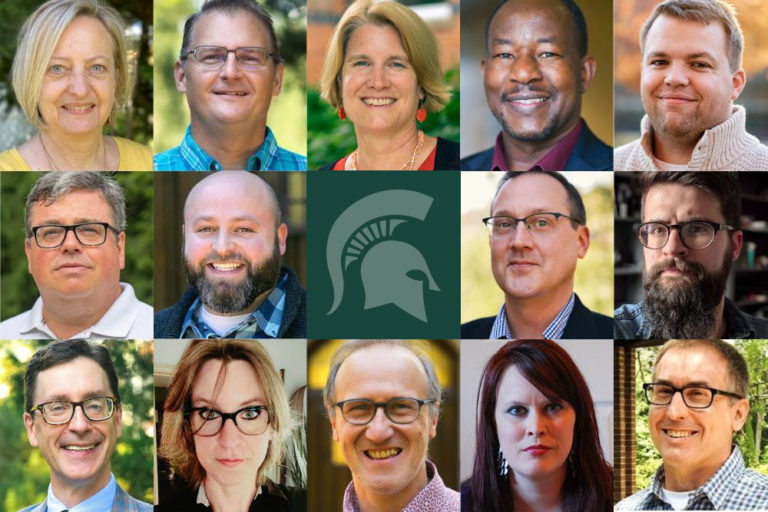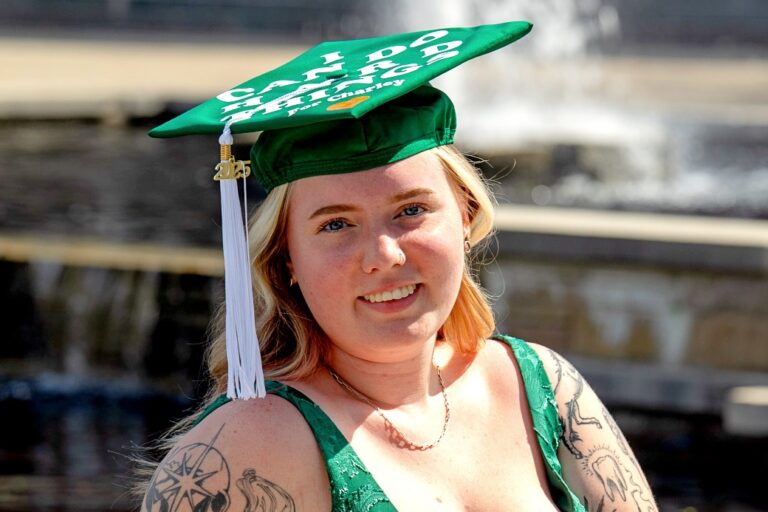The MSU Excavations at Isthmia, led by Jon Frey, Associate Professor in the Department of Art, Art History, and Design, will soon become one of the first archeological sites in Greece to use Radio Frequency Identification (RFID) to digitally track its collection.
RFID is a wireless technology that uses data transmitted via radio waves to identify objects. It is used in a wide range of applications including building or vehicle access, automated toll collection, and timing for races as well as tracking everything from animals, files, or inventory in hospitals, warehouses, museums, libraries, or companies. However, the use of RFID at an archeological site is a unique application of the technology.

In Fall 2020, Michigan State University took over sponsorship of the Isthmia excavations near Corinth, Greece, and Frey was named Director of the MSU Excavations at Isthmia. He oversees the program including the thousands of artifacts that have been collected at that site since the 1960s.
Safely storing and keeping track of each object is a major challenge in managing such a collection.
“We constantly have a storage problem at the dig,” Frey said. “Any excavation yields an enormous amount of material. When you’re an archaeologist, when you dig something up, it’s your obligation to store it and conserve it, to make sure it’s well preserved, and to make sure people can gain access to it if they want to study it.”

However, even the most well-intentioned and conscientious archaeologists end up misplacing objects. When that happens, it takes an enormous amount of searching to find something that’s been misplaced in a collection of thousands of items.
RFID technology can assist by helping to locate lost objects. This works by placing RFID tags on the objects. These tags can be coded with data including the name, description, condition, and location of the object. An RFID reader then can capture and locate this stored data through the RFID tag’s repeated pulsating radio waves.
“One of the innovative ways we are dealing with this problem is by essentially putting an RFID tag on everything in the collection. We hope that will help us do a better job of keeping track of where everything is.”
Frey hopes to build a system where RFID tagging is part of a larger constellation of the digital tools being used and recently received a Preservation Assistance Grant from the National Endowment for the Humanities (NEH) for his Accessible Artifact Storage at Isthmia project. The funding from the $9,983 NEH grant will be used to improve the storage of 6,500 excavated and cataloged objects by replacing shelving with more seismically secure, compact, and efficient storage. The grant also will be used to add RFID tagging technology to the collection to enable digital tracking and retrieval of objects.
“One of the innovative ways we are dealing with this problem is by essentially putting an RFID tag on everything in the collection,” Frey said. “We hope that will help us do a better job of keeping track of where everything is, or at least being able to find it when it gets lost.”

Frey often is contacted by scholars interested in studying a particular type of artifact, asking to view the object when they arrive at the dig. More often than not, the object is located where it should be. However, when an object can’t be found, such a request can lead to a scavenger hunt throughout the storage area.
“Occasionally, what ends up happening is days and days of telling some incredibly industrious and dedicated student volunteers ‘Here’s a picture of it, here’s the description of it, go find it.’ That’s not the best use of the limited resource of people’s attention and effort at the dig,” Frey said. “It would be so much easier to hand somebody a radio tag reader and say, ‘Walk around until this thing lets you know where it is.’ You could do in minutes what sometimes takes days.”
“What we’re trying to do is turn the excavation into a model example of what could happen if you turned your attention away from excavating new stuff and tried to focus on ways in which you could make the best use of what’s already in storage.”
In addition to creating an easier system for object retrieval, the Accessible Artifact Storage at Isthmia project also will contribute to a larger, long-term goal of the MSU Excavations at Isthmia to shift away from being a site focused solely on digging and finding new objects toward becoming a research center that focuses on the study of the objects that already have been excavated.
The ability to quickly locate, identify, and retrieve artifacts becomes even more important when approaching the dig and storage from this model.

“If you ask most archaeologists, they will tell you there is more stuff in storerooms at archaeological sites than any of us could publish in our lifetimes,” Frey said. “If the goal of archaeology is to find things and share those things we found with the public, then we’re not doing terribly good on the second half of that. We’re very good at finding things and putting them in storage, and then not telling anyone about them.
“What we’re trying to do is turn the excavation into a model example of what could happen if you turned your attention away from excavating new stuff and tried to focus on ways in which you could make the best use of what’s already in storage to support scholarship, to support people’s careers, and to support creative exploration.”
The MSU Excavations at Isthmia served as inspiration for the current exhibition at the MSU Union Art Gallery. The In Exchange For The Fire exhibition consists of work created by Michigan State University students who participated in the 2023 Ceramic Arts in Greece Study Abroad. As part of that program, students created their own ceramic works, which are now on display at the MSU Union Art Gallery through Friday, Oct. 27. A reception for the exhibition is scheduled for Friday, Oct. 20, from 5 to 7 p.m.
For more information on the work being done by Frey and his team in Greece, see the MSU Excavations at Isthmia website.


